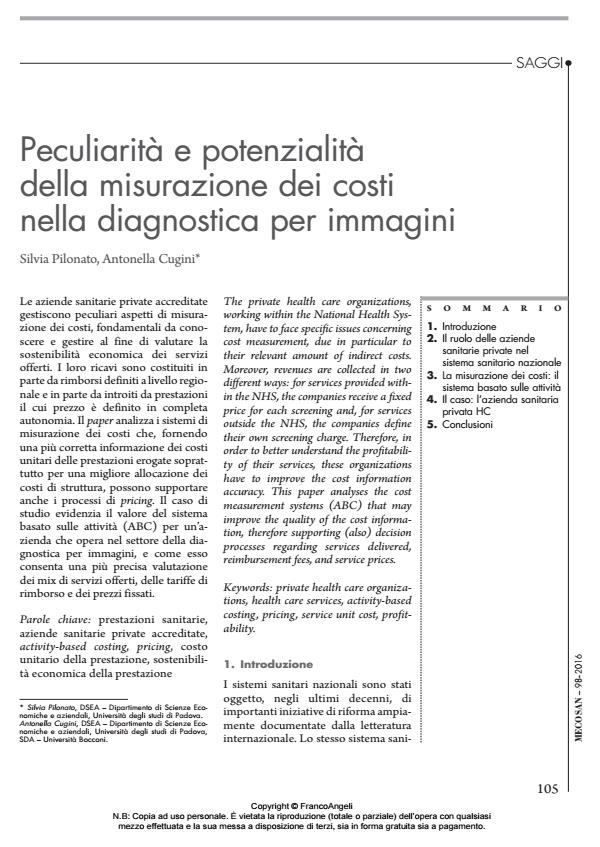Peculiarità e potenzialità della misurazione dei costi nella diagnostica per immagini
Journal title MECOSAN
Author/s Silvia Pilonato, Antonella Cugini
Publishing Year 2016 Issue 2016/98
Language Italian Pages 19 P. 105-123 File size 23701 KB
DOI 10.3280/MESA2016-098006
DOI is like a bar code for intellectual property: to have more infomation
click here
Below, you can see the article first page
If you want to buy this article in PDF format, you can do it, following the instructions to buy download credits

FrancoAngeli is member of Publishers International Linking Association, Inc (PILA), a not-for-profit association which run the CrossRef service enabling links to and from online scholarly content.
The private health care organizations, working within the National Health System, have to face specific issues concerning cost measurement, due in particular to their relevant amount of indirect costs. Moreover, revenues are collected in two different ways: for services provided within the NHS, the companies receive a fixed price for each screening and, for services outside the NHS, the companies define their own screening charge. Therefore, in order to better understand the profitability of their services, these organizations have to improve the cost information accuracy. This paper analyses the cost measurement systems (ABC) that may improve the quality of the cost information, therefore supporting (also) decision processes regarding services delivered, reimbursement fees, and service prices.
Keywords: Private health care organizations, health care services, activity-based costing, pricing, service unit cost, profitability.
Silvia Pilonato, Antonella Cugini, Peculiarità e potenzialità della misurazione dei costi nella diagnostica per immagini in "MECOSAN" 98/2016, pp 105-123, DOI: 10.3280/MESA2016-098006